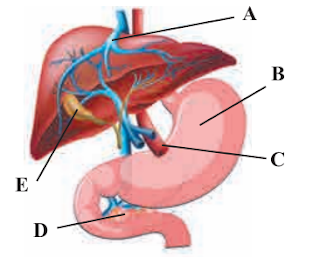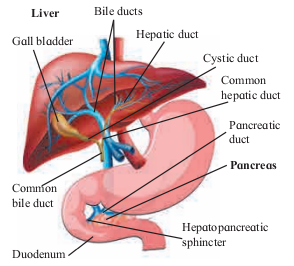Class 11 Biology chapter 14 Human Nutrition Textbook solution
Maharashtra state board Biology Textbook Solutions for Class 11 are very important and crusial that helps the students in understanding the hard topics and helps them in the preparation of class 11 board examination as well as verious compititive entrance examinations also. Studying the answers to the questions in the Biology textbook will check your understanding of a particular topic and helps you determine your strengths and weaknesses.
Class 11 Biology textbook Solutions for Class 11, Biology Chapter 14 Human Nutrition Textbook maharashtra state board are provided here with simple step-by-step detailed explanations. These solutions for Human Nutrition are very popular among Class 11 students for biology chapter 14 Human Nutrition Solutions come handy for quickly completing your homework and preparing for compititive exams like NEET, CET abd verious medical entrance examination also. All questions and answers are taken from the class 11 Biology textbook, Bjology Textbook Solutions of Class 11 Biology Chapter 14 are provided here for you for without any charge its free for you. All Biology textbook Solutions for class 11. Solutions for class 11 Biology subject, These biology textbook solutions are prepared by experts in the field and are 100% accurate for you.
1. Choose correct option
A. Acinar cells are present in ………..
a. liver
b. pancreas
c. gastric glands
d. intestinal glands
B. Which type of teeth are maximum in
number in human buccal cavity?
a. Incisors
b. Canines
c. Premolars
d. Molars
C. Select odd one out on the basis of digestive functions of tongue.
a. Taste
b. Swallowing
c. Talking
d. Mixing of saliva in food
D. Complete the analogy:
Ptyalin: Amylase : : Pepsin :
…………….. .
a. Lipase
b. Galactose
c. Proenzyme
d. Protease
2. Answer the following questions
A. For the school athletic meet, Shriya was advised to consume either Glucon-D or fruit juice but no sugarcane juice. Why it must be so?
Answer : Glucon d or fruit juice are directly converted into energy but not sugarcane juice. The sugar cane juice has complex compounds of sugar which takes time to be converted. Thus Shreya for athletic meet was advised to consume glucon-d or fruit juice rather than sugar cane juice.
B. Alcoholic people may suffer from liver disorder. Do you agree? Explain your answer.
Answer : yes.. Alcoholic liver disease occurs after years of heavy drinking. Over time, scarring and cirrhosis can occur. Cirrhosis is the final phase of alcoholic liver disease. Alcoholic liver disease does not occur in all heavy drinkers.
C. Digestive action of pepsin comes to a
stop when food reaches small intestine.
Justify.
Answer : Pepsin is an endopeptidase that breaks the protein into smaller units called peptides which is in the form of protease enzyme. They are produced in stomach and digestive enzymes acts on food bolus in the stomach. It helps in the digestion of the protein in food, this reaction stops before it reaches the intestine. The protein are broken down into individual amino acids. Later this amino acid are absorbed in the intestine blood stream.
D. Small intestine is very long and coiled. Even if we jump and run, why it does not get twisted? What can happen if it gets twisted?
Answer : intestine does not get twist as it is fixed very compactly inside our body it is rigidly fixed inside our body with many adjoining things like large intestine from the front from the back the hip bone of the Rib cage bone the spinal cord and the Kidneys from the other sides so it cannot move and it is it possible for getting the small intestine Twisted so the 2nd question answer is impossible for it can’t get twisted and even if we jump and run small intestine is too rigidly fixed so that it will never move.
3. Write down the explanation
A. Digestive enzymes are secreted at appropriate time in our body. How does it happen?
Answer : The digestive enzymes are secreted at appropriate time in our body in response to the various food ingested, to aid in their digestion. Explanation: After the food is “taken” in or “ingested” through the mouth, the food moves down the digestive tract to enter the stomach.
B. Explain the structure of tooth. Explain why human dentition is considered as the codont, diphydont and heterodont.
Answer : A tooth consists of the portion that projects above the gum called crown and the root that is made up of two or three projections which are embeded in gum. A short neck connects the crown with the root. The crown is covered by the hardest substance of the body called enamel.
Enamel is made up of calcium
phosphate and calcium carbonate. Basic shape of tooth is derived from dentin, a calcified connective tissue. The dentin encloses a cavity called pulp cavity. It is filled with connective tissue pulp. Pulp cavity contains blood vessels and nerves. Pulp cavity has extension in the root of the tooth called root canal. The dentin of the root of tooth is covered by cementum, a
bone like substance that attaches the root to the surrounding socket in the gum.
C. Explain heterocrine nature of pancreas with the help of histological structure.
Answer :
Pancreas is a leaf shaped heterocrine gland present in the gap formed by bend of duodenum under the stomach. Exocrine part of pancreas is made up of acini. Acinar cells secrete alkaline pancreatic juice that contains various digestive enzymes. Pancreatic juice is
collected and carried to duodenum by pancreatic duct. The common bile duct joins pancreatic duct to form hepato-pancreatic duct. It opens into duodenum. Opening of hepato-pancreatic
duct is guarded by sphincter of Oddi.
Endocrine part of pancreas is made up
of groups of cells called islets of Langerhans present between the acini. Islets contain
three types of cells. α-cells secrete glucagon, β-cells secrete insulin and somatostatin
hormone is secreted by δ-cells. Glucagon and insulin together control the blood-sugar level. Somatostatin hormone inhibits glucagon and insulin secretion.
4. Write short note on
A. Position and function of salivary glands.
Answer : There are three pairs of
salivary glands which open in buccal cavity. Parotid glands are present in front of the ear. The submandibular glands are present below the lower jaw. The glands present below the tongue are called sublingual. Salivary glands are made up of two types of cells. Serous cells secrete a fluid containing digestive enzyme called salivary amylase. Mucous cells produce mucus that lubricates food and helps swallowing.
B. Jaundice
Answer : jaundice with
yellowness of conjunctiva of eyes and skin and whitish stool. These are the symptoms of condition called jaundice. It is a sign of
abnormal bilirubin metabolism and excretion. Jaundice develops if excessive break down of red blood cells takes place along with increased bilirubin level than the liver can handle or there is obstruction in the flow of bile from liver to duodenum. Bilirubin produced from breakdown of haemoglobin is either water soluble or fat
soluble. Fat soluble bilirubin is toxic to brain cells. Hence serum bilirubin values have great diagnostic importance. There is no specific treatment to jaundice. Supportive care, proper rest are the treatments given to the patient.
5. Observe the diagram. This is histological structure of stomach. Identify and comment on significance of the layer marked by arrow
Answer : it is mucus which help the stomach to protect from HCL.
6. Find out pH maxima for salivary amylase, trypsin, nucleotidase and pepsin and place on the given pH scale
Answer : Salivary amylase -6.8
Trypsin-7.8 to 8.7
Nucleotidase-6.8
Pepsin-1.5 to 1.6
7. Write the name of a protein deficiency
disorder and write symptoms of it
Answer :
- Edema, which is characterized by swollen and puffy skin, is a classic symptom of kwashiorkor.
- Fatty Liver.
- Skin, Hair and Nail Problems.
- Loss of Muscle Mass.
- Greater Risk of Bone Fractures.
- Stunted Growth in Children.
- Increased Severity of Infections.




